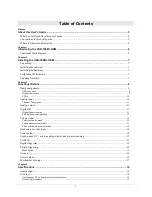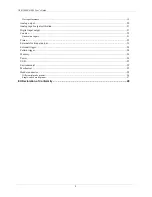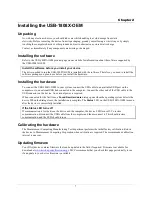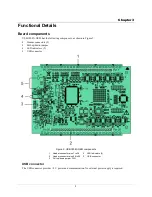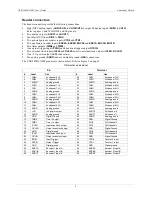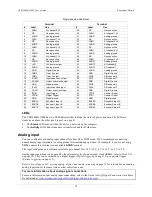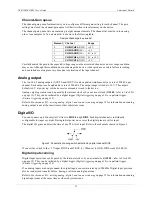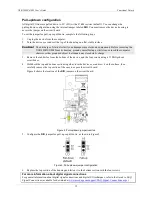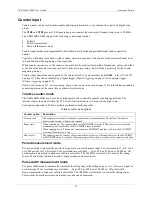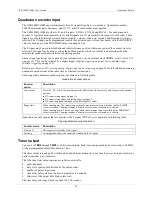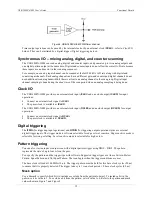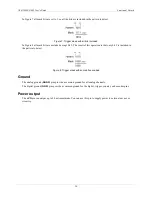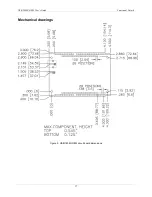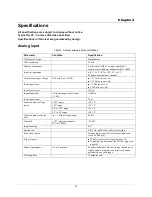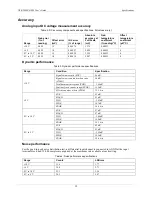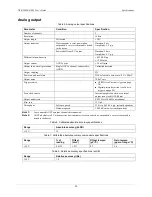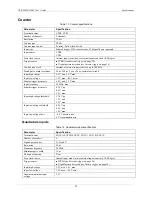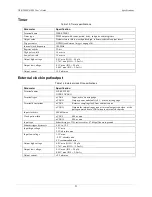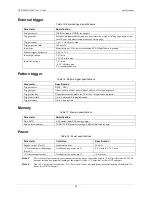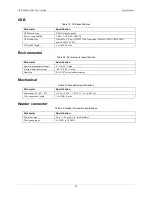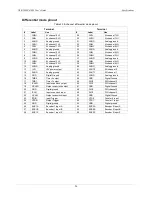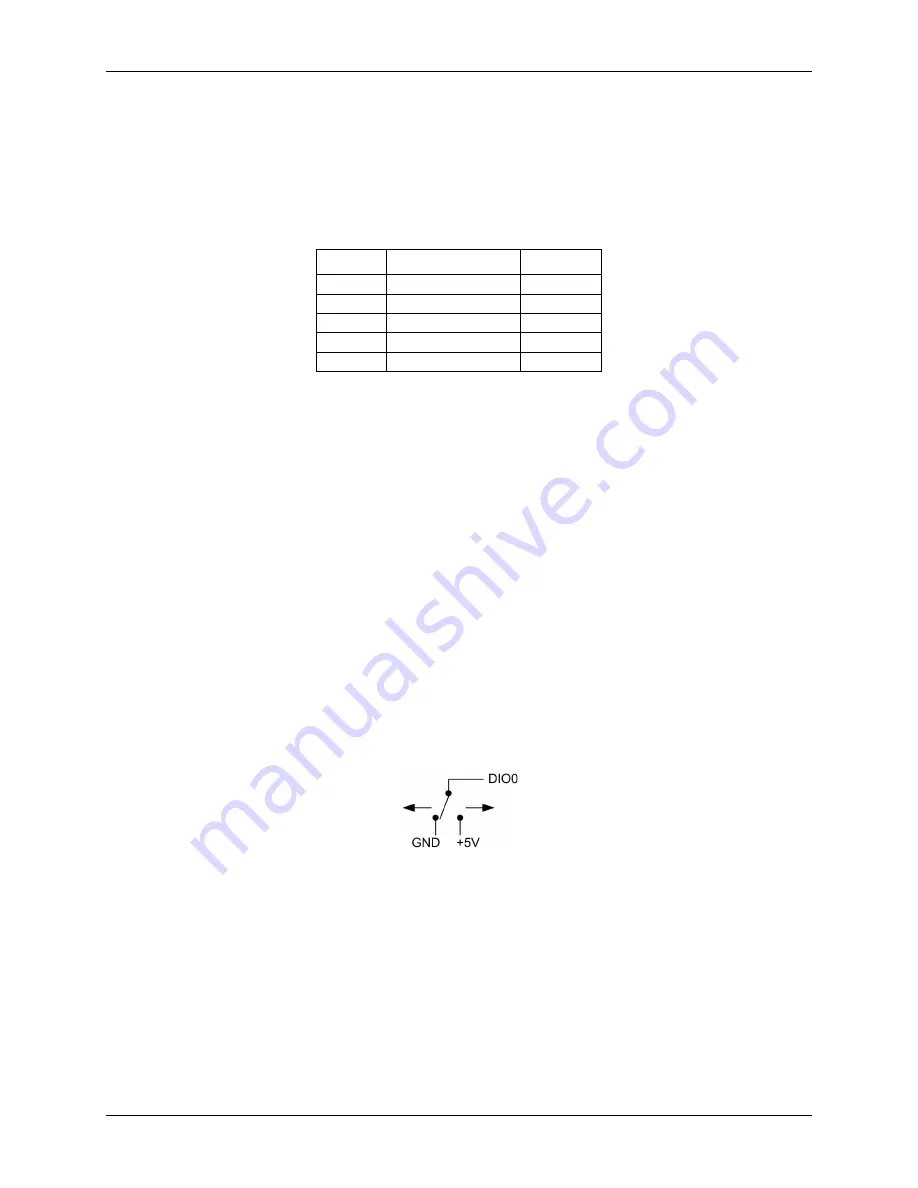
USB-1808X-OEM User's Guide
Functional Details
11
Channel-Gain queue
The channel-gain queue feature allows you to configure a different gain setting for each channel. The gain
settings are stored in a channel-gain queue list that is written to local memory on the device.
The channel-gain queue list can contain up to eight unique elements. The channel list must be in increasing
order. An example of a five-element list is shown in the following table.
Sample channel-gain queue list
Element Channel
Range
0
CH0H
/
CH0L
(DIFF) ±10 V
1
CH2H
/
AGND
(SE)
±5 V
2
CH3H
/
AGND
(SE)
0 V to 5 V
3
CH6H
/
CH6L
(DIFF) 0 V to 10 V
4
CH7H
/
CH7L
(DIFF) ±5 V
Carefully match the gain to the expected voltage range on the associated channel or an over range condition
may occur. Although this condition does not damage the device, it does produce a useless full-scale reading,
and can introduce a long recovery time due to saturation of the input channel.
Analog output
The two 16-bit analog outputs (AOUT0 and AOUT1) can be updated simultaneously at a rate of 500 kS/s per
channel. Each output can be updated at a rate of 500 kS/s. The output range is fixed at ±10 V. The outputs
default to 0 V at power up, or when a reset command is issued to the device.
Analog output operations can be paced by the internal clock or by an external clock (
OCLKI
– refer to
on page 15). They can be initiated by a digital trigger (
on page 15) or a pattern trigger
Synchronous I/O – mixing analog, digital, and counter scanning
on page 15 for information on running
analog output scans at the same time as other subsystem scans.
Digital I/O
You can connect up to four digital I/O lines to
DIO0
through
DIO3
. Each digital channel is individually
configurable for input or output. During initial power on or reset, the digital pins are set for input.
The digital I/O pins can detect the state of any TTL-level input. Refer to the schematic shown in Figure 3.
Figure 3. Schematic showing switch detection by digital channel DIO0
If you set the switch to the +5 V input, DIO0 reads TRUE (1). When set to GND, DIO0 reads FALSE (0).
Digital input scanning
Digital input operations can be paced by the internal clock or by an external clock (
ICLKI
on page 15). They can be initiated by a digital trigger (
on page 15) or a pattern trigger
If no analog inputs are being scanned, the digital inputs can sustain rates up to 200 kHz. Digital input ports can
also be read asynchronously before, during, or after an analog input scan.
Refer to
Synchronous I/O – mixing analog, digital, and counter scanning
on page 15 for information on running
digital input scans at the same time as other subsystem scans.



